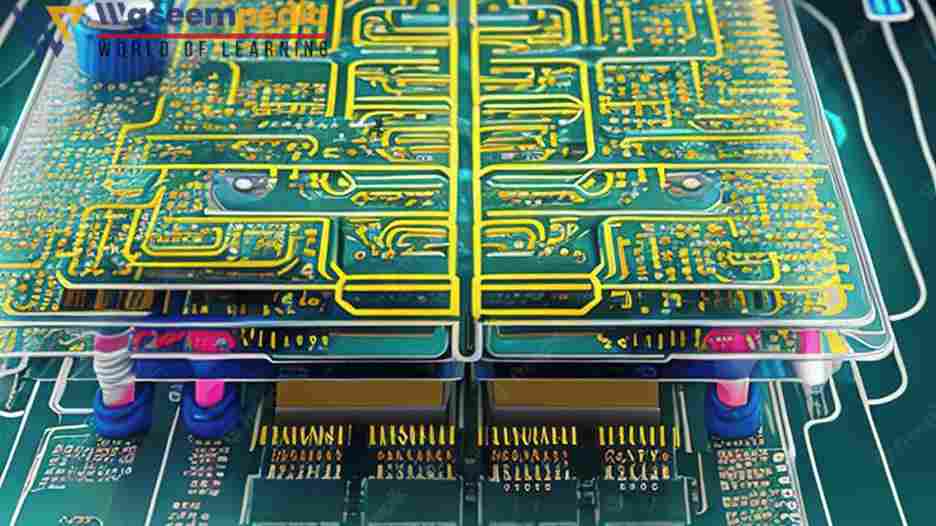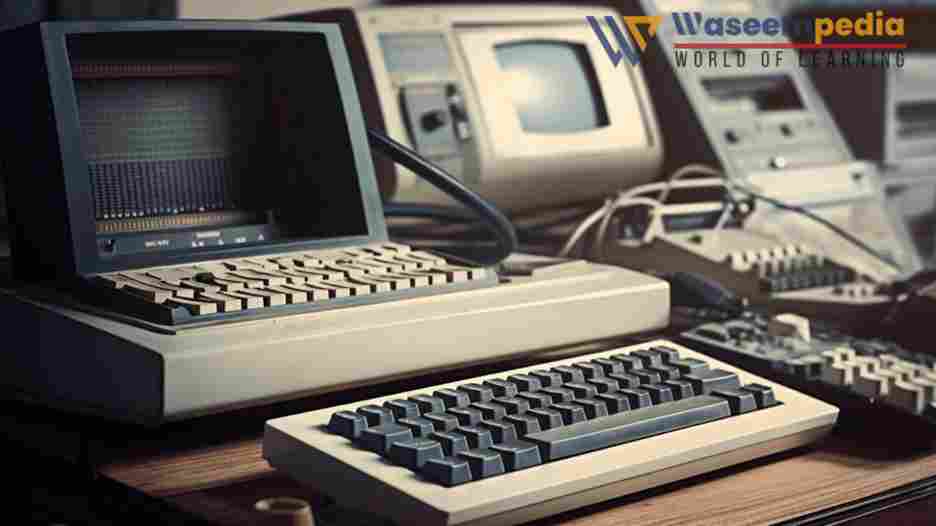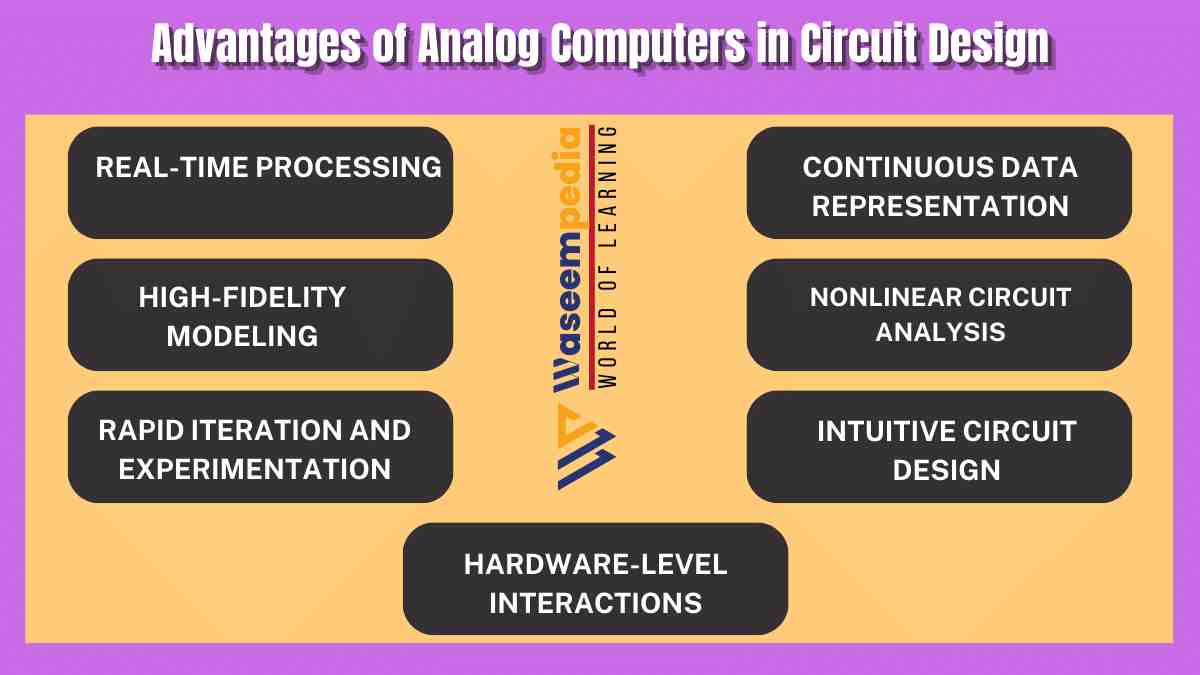Analog computers have been widely used in circuit design, offering distinct advantages that make them valuable tools in this field. Circuit design involves the creation and optimization of electronic circuits, ranging from simple components to complex integrated systems. While digital circuit design has become prevalent, analog computers continue to provide unique benefits in certain aspects of the design process. In this article, we will explore the advantages of analog computers in circuit design and understand their significance in this domain.

Analog computers enable hardware-level interactions in circuit design. Designers can directly interface analog computers with physical components and devices, allowing for real-time measurements and analysis of circuit behavior.
This hardware-level interaction enhances the understanding and optimization of circuit performance, as designers can evaluate the impact of real-world constraints and test circuit designs with physical components
Circuit design plays a crucial role in electronics, encompassing a wide range of applications, from consumer electronics to industrial systems. Digital circuit design has dominated the field with the advent of digital technologies, but analog computers offer specific advantages that complement the capabilities of digital systems.
By leveraging the continuous nature of analog computation, analog computers enable designers to tackle complex circuit design challenges and optimize circuit performance.
What is Analog Computers?
Analog computers process information using continuous physical quantities, such as voltages or currents, to represent and manipulate data. Unlike digital computers that operate on discrete values, analog computers can directly model and simulate the behavior of electronic circuits. In the context of circuit design, analog computers offer a unique approach to understanding and optimizing circuit performance.

There are 5 Advantages of Analog Computers in Circuit Design are following.
1. Real-Time Processing
Real-time processing is essential in circuit design, especially during the prototyping and optimization stages. Analog computers excel in real-time processing due to their ability to work with continuous data streams without the need for digitization or discretization.
This real-time capability allows designers to observe the behavior of the circuit in real-time and make immediate adjustments. Analog computers enable rapid iteration and real-time experimentation, facilitating efficient circuit optimization.
2. Continuous Data Representation
Analog computers utilize continuous data representation, allowing designers to work with the fine-grained details of circuit behavior.
Continuous data representation preserves the fidelity of circuit characteristics, avoiding the quantization errors associated with digital systems. Analog computers provide a more accurate representation of circuit phenomena, enabling designers to analyze and optimize circuits at a deeper level.
3. High-Fidelity Modeling
Analog computers excel in high-fidelity modeling of electronic circuits. By directly simulating the continuous behavior of circuits, analog computers can accurately capture the dynamics of complex circuits, including non-idealities and nonlinear effects. High-fidelity modeling enables designers to assess the performance of circuits under various conditions and make informed decisions during the design process.
4. Nonlinear Circuit Analysis
Many electronic circuits exhibit nonlinear behavior, which can be challenging to analyze using traditional mathematical methods. Analog computers are well-suited for analyzing nonlinear circuits, as they can directly model and simulate the nonlinear relationships between circuit variables.
By leveraging the continuous nature of analog computation, analog computers enable designers to explore the effects of nonlinear phenomena and optimize circuit performance accordingly.
3. Rapid Iteration and Experimentation
Analog computers facilitate rapid iteration and experimentation in circuit design. Designers can quickly modify circuit parameters, simulate the behavior of the modified circuit in real-time, and observe the immediate effects.
Analog computers provide a hands-on approach to circuit design, allowing designers to interact directly with the simulated circuit environment and experiment with different configurations. This iterative process of experimentation accelerates learning and optimization, leading to improved circuit performance.
4. Intuitive Circuit Design
Analog computers offer an intuitive approach to circuit design. Designers can physically connect and manipulate analog components to build and test circuit configurations. This hands-on interaction allows for a deeper understanding of circuit behavior and fosters creative and innovative design solutions.
Analog computers provide an intuitive platform for designers to explore and experiment with circuit concepts, encouraging a more interactive and engaging design process.
5. Hardware-Level Interactions
Analog computers enable hardware-level interactions in circuit design. Designers can directly interface analog computers with physical components and devices, allowing for real-time measurements and analysis of circuit behavior.
This hardware-level interaction enhances the understanding and optimization of circuit performance, as designers can evaluate the impact of real-world constraints and test circuit designs with physical components.
Related FAQ’s
Why are hardware-level interactions valuable in circuit design?
Hardware-level interactions enable designers to interface analog computers with physical components, allowing for real-time measurements and analysis of circuit behavior with real-world constraints.
How do analog computers handle nonlinear circuits in design?
Analog computers can directly model and simulate the nonlinear relationships between circuit variables, enabling designers to analyze and optimize the performance of nonlinear circuits.
Why is real-time processing important in circuit design?
Real-time processing is important due to allows designers to observe circuit behavior in real-time and make immediate adjustments, facilitating rapid iteration and efficient circuit optimization.
What advantages do analog computers offer in circuit design?
Analog computers excel in real-time processing, continuous data representation, high-fidelity modeling, nonlinear circuit analysis, rapid iteration and experimentation, intuitive design, and hardware-level interactions.
How do analog computers differ from digital computers in circuit design?
Analog computers process continuous data and directly model circuit behavior, while digital computers operate on discrete values and rely on algorithms for circuit design.

